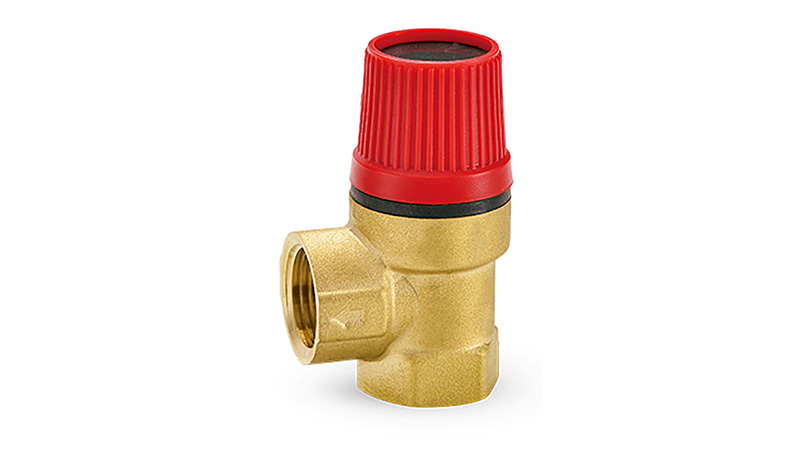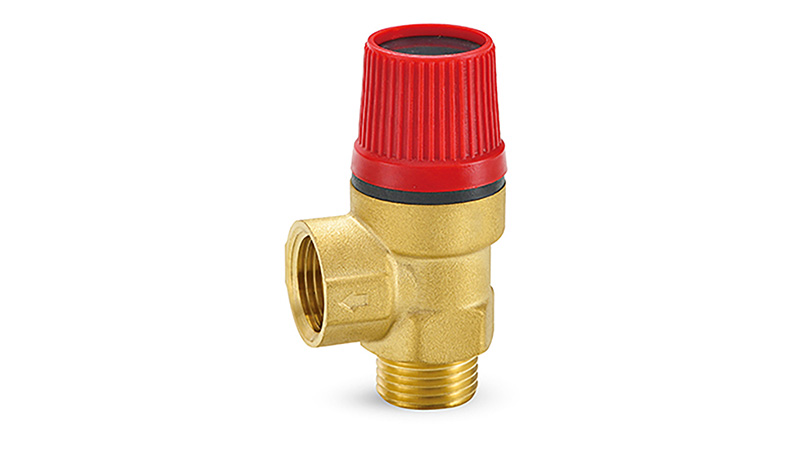Safety Pressure Relief Valve
Forged valve body, adjustable pressure rating
ART.N10151005
ART.N10151005
Description
Reviews
Safety Pressure Relief Valve N10151005 is widely used in water supply, heating and equipment matching. It is the designated product for more than 80% of air-conditioning plants, solar energy plants, and boiler plants. Safety pressure relief valves include air-conditioning safety pressure relief valves, solar safety pressure relief valves, heating safety pressure relief valves, boiler safety pressure relief valve valve, with a large inventory of various specifications, product quality is reliable, to prevent the safety pressure relief valve from leaking or not exhausting, choosing a quality safety pressure relief valve manufacturer is very important.
Parameters:
• Sizes: 3/8" to 3/4" (DN10 to DN20)
• Working pressure: 0.6 MPa to 0.9 MPa
• Working temperature: -10 to 120℃
• Standard bore design
• Sandblasted and nickel-plated
• BSP or NPT threads available
• Customized production acceptable
• Materials: CW617N, HPb57-3, C37700, DZR
Features:
• Best seller with good quality
• 100% leakage test for each valve
• Anti-blow-out stem design
• Suitable for a full range of liquids
• Easy and swift to open and close
How safety pressure relief valve works
When gas overflows in the system, the gas will climb up the pipeline and eventually gather at the highest point of the system. The safety pressure relief valve is generally installed at the highest point of the system. When the gas enters the safety pressure relief valve cavity, it gathers at the safety pressure relief valve. On the upper part of the valve, the pressure rises with the increase of gas in the valve. When the gas pressure is greater than the system pressure, the gas will drop the water level in the cavity, and the float will drop with the water level to open the exhaust port; after the gas is exhausted, the water level will rise. The float also rises, closing the exhaust port. In the same way, when negative pressure is generated in the system, the water level in the valve cavity drops and the exhaust port opens. Since the outside atmospheric pressure is greater than the system pressure at this time, the atmosphere will enter the system through the exhaust port to prevent the harm of negative pressure. If the valve cap on the valve body of the safety pressure relief valve is tightened, the safety pressure relief valve will stop venting. Normally, the valve cap should be in an open state.
The function of safety pressure relief valves
Safety pressure relief valve is used in independent heating systems, central heating systems, heating boilers, central air-conditioning, floor heating and solar heating systems and other pipeline exhaust. Because there is usually a certain amount of air dissolved in water, and the solubility of air decreases with the increase of temperature, the gas gradually separates from the water in the process of water circulation, and gradually gathers together to form large bubbles or even air columns. Because of the supplement of water, gas is often generated.
Features of safety pressure relief valves
1. The float of the safety pressure relief valve adopts low-density PPR and composite materials, which will not deform even if it is immersed in high-temperature water for a long time. Will not cause difficulty in the movement of the pontoon.
2. The buoy lever of the safety pressure relief valve is made of hard plastic, and the connection between the lever and the buoy and the support adopts a movable connection, so it will not rust during long-term operation and cause the system to fail to work and cause water leakage.
3. The sealing end surface of the safety pressure relief valve lever is supported by a spring, which can expand and contract with the movement of the lever to ensure the tightness without exhaust.
Installation instruction of safety pressure relief valves
1. Safety pressure relief valve should be installed vertically at the highest point of the system, and the hot water heating system should be installed at the highest point of the end valve of the piping system
2. When installing, first tighten the connecting seat, after tightening the safety pressure relief valve body, after installation, loosen the small end cap to allow gas to be discharged.
3. When cleaning is required, tighten the small end cap first, and then remove the safety pressure relief valve body and other parts.
4. Do not loosen the connecting seat when unloading, the return seat will automatically move up to close the channel.
5. When installing safety pressure relief valve, check the return seat first, and whether the "O"-shaped sealing ring is assembled and whether it is damaged, so as to avoid leakage after installation.
6. When the water quality is poor, it should be checked and replaced regularly to prevent rust spots from sticking to the sealing surface and causing drainage.
Chemical compositions of safety pressure relief valves
CW614N and CW617N brass materials are widely used for European safety pressure relief valve.
CW617N safety pressure relief valve has better physical property to stand higher working pressure and temperature, more importantly the Pb percentage share is less than 2.5% and applicable for drinking water systems, good for environment and people’s health.
CW614N safety pressure relief valve is also popularly used because of similar compositions and lower costs, suitable for those applications without much environmental requirements.
How safety pressure relief valves produced
1. Safety pressure relief valve design
2. safety pressure relief valve mold making
3. safety pressure relief valve casting and forging
(1) Sand foundry casting: The earliest production mode in the valve field. Because the casting method does not have enough pressure, the valves produced by this process are prone to blisters and cause product leakage to induce a series of problems.
(2) Hot forging: The valve body formed by forging will not have trachoma, and the appearance will be more exquisite.
4. Sand blasting treatment
5. Metalworking of safety pressure relief valve
6. Accessory assembly of safety pressure relief valve
7. Product pressure test of safety pressure relief valve
8. Packing of safety pressure relief valve
Pressure adjustment of safety pressure relief valves
1. Before the safety pressure relief valve leaves the factory, its opening pressure should be adjusted one by one to the set value required by the user. If the user proposes the working pressure level of the spring, the lower limit value of the pressure level should generally be adjusted before leaving the factory.
2. Before installing the safety pressure relief valve to the protected equipment or before installation, the user must re-adjust at the installation site to ensure that the set pressure value of the copper safety valve meets the requirements.
3. Within the range of the spring working pressure level indicated on the nameplate, the opening pressure can be adjusted by rotating the adjustment screw to change the spring compression.
4. Before rotating the adjustment screw, the safety pressure relief valve inlet pressure should be reduced to less than 90% of the opening pressure to prevent the valve disc from being driven to rotate when the adjustment screw is rotated, which may damage the sealing surface.
5. In order to ensure the accuracy of the opening pressure value, the media conditions during adjustment, such as the type of media and temperature, should be as close as possible to the actual operating conditions. The type of medium changes, especially when the accumulation state of the medium is different (for example, from a liquid phase to a gas phase), the opening pressure often changes. When the working temperature increases, the opening pressure generally decreases. Therefore, when adjusting at room temperature for high temperature, the set pressure value at room temperature should be slightly higher than the required opening pressure value. How high it is is related to the safety pressure relief valve structure and material selection, and should be based on the manufacturer's instructions.
6. The conventional safety pressure relief valve is used to fix additional back pressure. When the opening pressure is adjusted after inspection (the back pressure is atmospheric pressure at this time), its setting value should be the required opening pressure value minus the additional back pressure value.
Share your thoughts
Showing
6
of
0
reviews
Most recent
Top Reviews
Read more
Your rating
Your review *
Name *
Enter your Name
Email *
Enter your Email
Submit
Contact Us Now
Enter your inquiry details, we will response within 24 hours.
Name can't be empty
E-mail can't be empty
Company can't be empty
Phone can't be empty
Phone
Products can't be empty
Products you want
Message can't be empty
Verification code error
Clear
People who viewed this item also viewed



